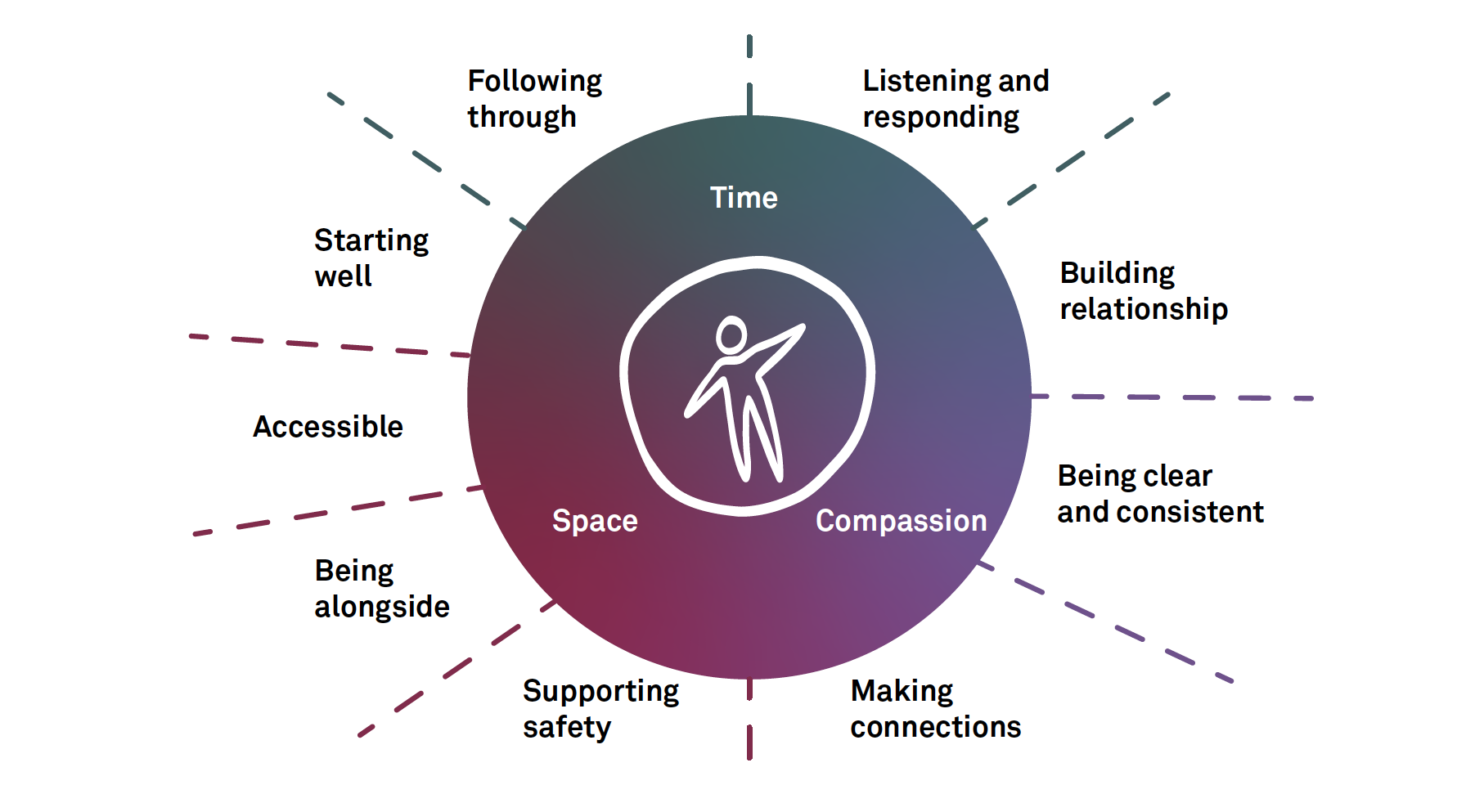Fife’s Suicide Prevention Guidance Refresh
This practice story describes the process and learning undertaken in Fife in their work to refresh their local suicide prevention guidance.
The learning from their work is laid out through the lens of the Time, Space, Compassion principles.

The guidance and workshops have given me confidence in strategies to use with young people”
The Challenge
Fife's challenge was to consider the previous Children and Young People Suicide Prevention Guidance, by:
reflecting on what needed to be updated
identifying any new information for inclusion,
designing the refreshed document in an accessible way
developing a plan for effective implementation
From the outset there was no budget provided and so the work relied on in-kind contributions from partners.

What They Did
Fife set up a multiagency working group (with representation from Barnardo’s, CAMHS, Child Protection Committee, Children and Families and Justice Social Work, Education Service, Educational Psychology, Health Promotion Service and School Nursing Service) who worked collaboratively together over a 2-year period.
Each member of the group identified the section from the previous guidance that was most relevant to their experience and knowledge and took responsibility to review and refresh this.
A 6-week consultation was undertaken on the draft document with the final document being reviewed collectively by the working group before being taken for approval through local reporting structures.
The final guidance was produced and placed online on NHS Fifes website, to provide a centralised place accessible to all staff in statutory and third sector agencies working with children and young people locally.
The guidance sits on the site as a HTML and PDF; this was done to address the challenge of holding no budget to print hard copies.
An accompanying case study PDF document was also produced to support staff to reflect on how they would respond to disclosures of suicidal thoughts or action by young people, and consider their response, as a practitioner or a service.
To support the implementation of the guidance a 3-hour workshop was also developed.
This is facilitated by members of the multiagency working group and aims to support all staff working with children and young people to recognise and respond to disclosures of suicidal thoughts, distress and crisis.
It outlines key concepts and practices, such as the IMV Model and Time Space Compassion approach, which underpins the guidance’s understanding of suicide and the 1-page protocol for staff responding to children and young people experiencing suicidal thoughts, distress and crisis.
The workshops provide the opportunity for practitioners from across the local system to share learning and understand their role in using the guidance, in line with their own organisational policies and procedures.
What They Have Learned
On reflecting on this work Fife have highlighted the principles of Time, Space, Compassion outlined below as being key:
Building relationships
The project allowed partners to work together openly and honesty, creating the 'Time' to consider the key information needed by practitioners supporting children and young people; 'Space' to reflect on the barriers and challenges faced by practitioners supporting children and young people; and produce 'Compassionate' guidance which would support practitioners to engage in difficult conversations with children and young people at risk of suicide.
Being clear and consistent
During the development of the guidance, the working group were aware of the challenge of different language used across services, organisations and sectors. As this was a multiagency document, it was important they could identify a universal language which staff could relate to and understand, regardless of sector, organisation or service. The Time Space Compassion approach was central to the guidance as it provided this universal language, allowing staff to focus on the person not the process.
Listening and responding
Working as a multiagency group can be challenging given the need to make sure everyone’s views and opinions are heard and considered. To ensure this happened, the group didn’t rush the work and took the ‘Time’ to discuss at length some of the more challenging and technical elements of the guidance.
The Impact
This work is helping to shape a more compassionate and informed approach to suicide prevention for staff in Fife working with children and young people.
By focusing on real experiences and building bridges between services, Fife aims to create a system where practitioners feel they can respond to young people's needs and can call upon services to support young people.
In terms of the new guidance use between 1st November 2024 and 31st May 2025, the HTML document has received over 2,800 views and 3 workshops will have been delivered by the end of 2025, with a total of 42 members of staff attending.
Reflections from members of the Youth Advisory Group on Fife’s practice
What they liked:
“That the Guidance itself has a section on integrating suicide prevention into school culture and the curriculum as this is something members feel will be valuable”
“The inter-agency approach as this allows for views from all sorts of young people and feedback from different audiences “
What they found interesting:
“Within the guidance there are stories from those with lived experience, this is valuable as it shares and values what people with lived experience feel is needed”
“How Fife are sharing their learning and making the guidance public. This will be helpful for people to use and develop in their own organisations and local areas”
More Information
The guidance can be found here.
